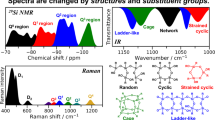Abstract
Squirrel monkeys (N=4) were trained with food reinforcement to press one of two levers after administration of IV cocaine (0.3 or 1.0 mg/kg) or the other lever after saline. After training, IV cocaine (0.03–3.0 mg/kg) produced dose-related increases in the percentage of responses on the cocaine lever (ED50=0.15 mg/kg). Cocaine delivered IM also produced dose-related increases in cocaine-appropriate responding (ED50=0.32 mg/kg), but was approximately half as potent as IV cocaine. Similar relative potency relations were obtained for decreases in response rates produced by cocaine. Prior to some sessions subjects were placed in a Plexiglas® chamber and exposed for 60 s to cocaine vapor created with an ultrasonic nebulizer. Exposure to vapor from cocaine solutions (1.0–30.0 mg/ml) produced concentration-dependent increases in cocaine-appropriate responding and decreases in response rates. Exposure to vapor from a 30 mg/ml concentration produced virtually exclusive cocaine-appropriate responding. Concentration-effect curves for inhaled cocaine were similar to dose-effect curves obtained when cocaine was administered by the other routes. The time course of the minimally effective concentration of inhaled cocaine was compared to that of the minimally effective doses of systemically administered cocaine. Inhaled cocaine had a duration of action longer than IV cocaine. The results indicate that inhaled cocaine vapor has effects qualitatively similar to those of IV cocaine, and may have a duration of action longer than that of an IV cocaine dose producing a similar degree of drug-appropriate responding.
Similar content being viewed by others
References
Dinnies JD, Darr CD, Saulys AJ (1990) Cocaine toxicity in toddlers. Am J Dis Child 144:743–744
Finney DJ (1964) Statistical methods in biological assay, 2nd edn. Hafner, New York
Hake DF, Azrin NH (1963) An apparatus for delivering pain shock to monkeys. J Exp Anal Behav 6:297–298
Herd JA, Morse WH, Kelleher RT, Jones LG (1969) Arterial hypertension in the squirrel monkey during behavioral experiments. Am J Physiol 217:24–29
Jacob P, III, Jones RT, Benowtiz NL, Shulgin AT (1989) Cocaine smokers inhale a pyrolysis product: anhydroecgonie methyl ester. Clin Pharmacol Ther 45:186
Jaffe AB, Sharpe LG, Jaffe JH (1989) Rats self-administer sufentanil in aerosol form. Psychopharmacology 99:289–293
Jeffcoat AR, Perez-Reyes M, Hill JM, Sadler BM, Cook CE (1989) Cocaine disposition in humans after intravenous injection, nasal insufflation (snorting), or smoking. Drug Metab Dispos 17:153–159
Johnston LD, O'Malley PM, Bachman JG (1988) Illicit drug use, smoking and drinking by America's high schol students, college students, and young adults, 1975–1987. DHHS Publication No. (ADM) 89–1602. US Govt Printing Office, Washington DC
Kelleher RT, Gill CA, Riddle WC, Cook L (1963) On the use of the squirrel monkey in behavioral and pharmacological experiments. J Exp Anal Behav 6:249–252
Kozel NJ, Adams EH (1986) Epidemiology of drug abuse: an overview. Science 234:970–974
Martin BR, Lue LP (1989) Pyrolysis and volatilization of cocaine. J Anal Toxicol 13:158–162
National Institute on Drug Abuse (1989) National Household Survey on Drug Abuse: Population Estimates 1988. DHHS Publication 89-1636. US Govt Printing Office, Washington DC
Perez-Reyes M, DiGuiseppi S, Ondrusek G, Jeffcoat AR, Cook CE (1982) Free-base cocaine smoking. Clin Pharmacol Ther 32:459–465
Snedecor GW, Cochran WG (1967) Statistical methods, 6th edn. Iowa State University Press, Ames Iowa, pp 135–171
Snyder CA, Wood RW, Graffe JF, Bowers A, Mager K (1988) “Crack smoke” is a respirable aerosol of cocaine base. Pharmacol Biochem Behav 29:93–95
Takada K, Swedberg MDB, Goldberg SR, Katz JL (1989) Discriminative stimulus effects of intravenousl-nicotine and nicotine analogs or metabolites in squirrel monkeys. Psychopharmacology 99:208–212
Author information
Authors and Affiliations
Rights and permissions
About this article
Cite this article
Katz, J.L., Sharpe, L.G., Jaffe, J.H. et al. Discriminative stimulus effects of inhaled cocaine in squirrel monkeys. Psychopharmacology 105, 317–321 (1991). https://doi.org/10.1007/BF02244424
Received:
Revised:
Issue Date:
DOI: https://doi.org/10.1007/BF02244424




